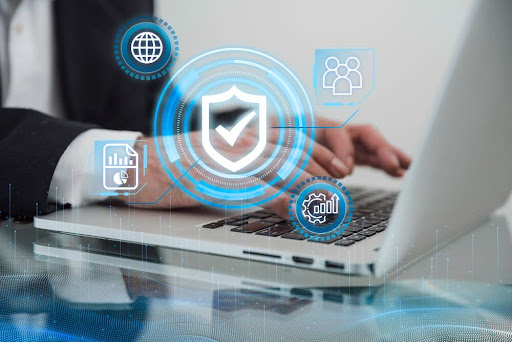In the ever-evolving landscape of cybersecurity, managing identities and access is paramount.
With the proliferation of cloud services, IoT devices, and interconnected systems, traditional methods of authentication are no longer sufficient to ensure the security of digital assets.
This is where Managed Identity Services step in, offering a comprehensive solution to streamline authentication processes while bolstering security measures.
Understanding Managed Identity Services
Managed Identity Services (MIS) encompass a range of solutions designed to simplify and centralize the management of user identities and access controls across various platforms and applications.
At their core, managed identity services provide a centralized platform for managing user authentication, authorization, and entitlements, thereby reducing complexity and enhancing security.
Key Components of Managed Identity Services
1. Identity Lifecycle Management: MIS facilitates the entire lifecycle of user identities, from onboarding and provisioning to deprovisioning and offboarding.
By automating these processes, organizations can ensure that access rights are granted and revoked in a timely manner, minimizing the risk of unauthorized access.
Identity lifecycle management ensures that users have the appropriate level of access throughout their tenure with the organization, enhancing security and compliance.
2. Single Sign-On (SSO): SSO is a core feature of MIS that allows users to access multiple applications and services with a single set of credentials.
This not only enhances user experience but also reduces the burden on IT administrators by eliminating the need for users to remember multiple passwords.
SSO improves productivity and security by reducing the likelihood of password fatigue and the use of weak or reused passwords.
3. Multi-Factor Authentication (MFA): MFA adds an extra layer of security by requiring users to provide multiple forms of authentication before gaining access to a system or application.
MIS integrates MFA seamlessly into the authentication process, strengthening security without sacrificing usability.
By requiring additional verification steps beyond passwords, MFA helps prevent unauthorized access even if passwords are compromised, enhancing overall security posture.
4. Role-Based Access Control (RBAC): RBAC is a method of restricting system access based on the roles of individual users within an organization.
MIS enables organizations to define roles and permissions centrally, ensuring that users only have access to the resources necessary for their roles.
RBAC reduces the risk of unauthorized access and data breaches by enforcing the principle of least privilege, whereby users are granted access only to the resources required to perform their job functions.
Benefits of Managed Identity Services
Implementing Managed Identity Services offers a myriad of benefits for organizations seeking to streamline authentication processes and enhance security:
1. Improved Security: By centralizing identity management and implementing robust authentication mechanisms such as SSO and MFA, MIS helps organizations strengthen their security posture and mitigate the risk of unauthorized access and data breaches.
Centralized identity management allows organizations to enforce consistent security policies and controls across their entire ecosystem, reducing the risk of security gaps and vulnerabilities.
2. Enhanced User Experience: SSO capabilities provided by MIS simplify the login process for users, reducing the need to remember multiple passwords and enhancing overall user experience.
By providing seamless access to applications and services, SSO improves user productivity and satisfaction, leading to higher levels of engagement and adoption.
3. Increased Productivity: By automating identity lifecycle management tasks, MIS frees up IT resources and reduces administrative overhead, allowing organizations to focus on strategic initiatives rather than routine maintenance tasks.
Automated provisioning and deprovisioning processes ensure that users have timely access to the resources they need, minimizing delays and disruptions to business operations.
4. Compliance and Audit Readiness: MIS provides organizations with the tools and capabilities needed to enforce access controls, monitor user activity, and generate audit trails, ensuring compliance with regulatory requirements and facilitating audit readiness.
By maintaining detailed records of user access and permissions, organizations can demonstrate compliance with industry regulations and internal policies, reducing the risk of fines and penalties.
Challenges and Considerations
While Managed Identity Services offer numerous benefits, organizations must also be aware of the challenges and considerations associated with their implementation:
1. Integration Complexity: Integrating MIS with existing systems and applications can be complex and time-consuming, requiring careful planning and coordination to ensure seamless interoperability.
Organizations must assess their existing infrastructure and identify potential integration points and dependencies to minimize disruption to business operations.
2. Vendor Lock-In: Depending on the chosen MIS provider, organizations may face vendor lock-in, limiting their flexibility and potentially increasing long-term costs.
To mitigate this risk, organizations should carefully evaluate vendor offerings and ensure that they align with their long-term strategic goals and requirements.
3. Security Risks: While MIS can enhance security, organizations must remain vigilant against emerging threats such as identity theft, credential stuffing, and phishing attacks, which could compromise the integrity of their authentication mechanisms.
To mitigate these risks, organizations should implement robust security controls and regularly monitor and update their MIS solutions to address new and evolving threats.
4. User Adoption: User adoption is critical to the success of MIS implementation. Organizations must invest in user training and education to ensure that employees understand the benefits of MIS and how to use it effectively.
By providing comprehensive training and support resources, organizations can encourage user adoption and maximize the return on their investment in MIS.
Conclusion
In an increasingly interconnected and digitized world, managing identities and access controls is a complex but essential task for organizations of all sizes.
Managed Identity Services offer a comprehensive solution to streamline authentication processes, enhance security, and improve user experience.
By leveraging MIS effectively, organizations can strengthen their security posture, increase productivity, and ensure compliance with regulatory requirements, positioning themselves for success in today’s rapidly evolving threat landscape.



